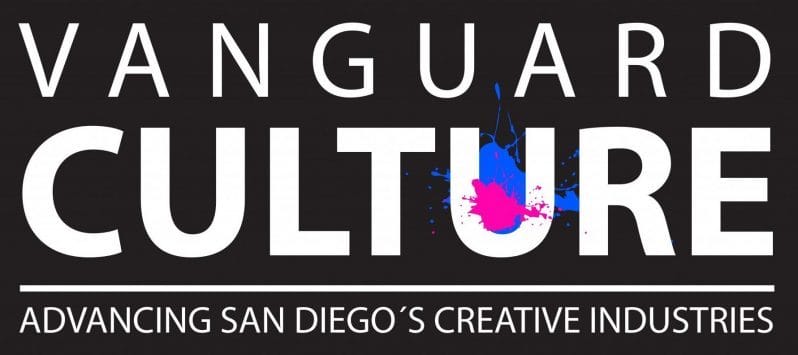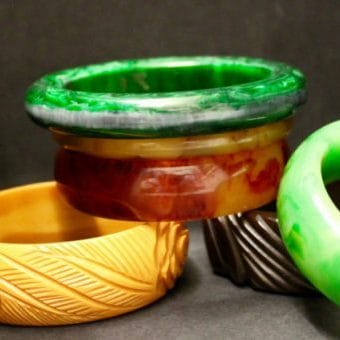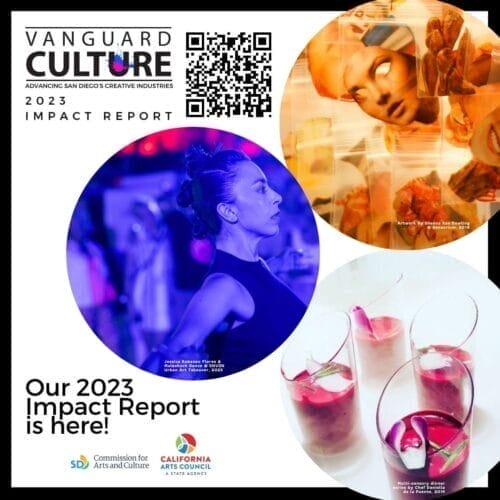Brilliant Bakelite is Back
By Rebecca Romani
Hailed by designers and fashionistas, it was considered the design miracle of the early 20th century. It graced everything from cars to coffeemakers, and its bright colors and pliable nature gave thrift-conscious housewives that touch of glamour they were dreaming of as they worked away in the new kitchens of the new century.
Bakelite.
Alluring.
Charming.
Versatile.
Time Magazine called it the material of 1,000 uses in a 1924 article. It was durable, held up to heat, and kept its good looks use after use. For a while there, its future looked as bright as the reds that popped on earrings and the sunny yellows that served at the breakfast table.
But after WWII, Bakelite’s reign was usurped by other materials and it fell out of fashion, languishing in old jewelry boxes, and hiding out in the garage when newer, more modern appliances came to town.
And now Bakelite is having a renaissance of sorts.
“It’s beautiful, colorful, and spirited,” says Darlene Davies, San Diego-based historian and Bakelite collector.
Davies has brought that spirit to her curated show, “Bakelite In The Age of Plastics,” now up at the Women’s Museum of California at Liberty Station. The show features a wide variety of Catalin Bakelite products from a stunning circular red radio to humble kitchen items like coffee cups and a pepper grinder.
According to Davies, Bakelite was THE fashion accessory of stars and Susie Homemaker from the Jazz Age until shortly after WWII.
Bakelite was first developed in New York about 1907, as a way to replace Shellac and to create molded, heat-resistant electric components. As the ability to create sophisticated molds and colors grew, designers like Coco Chanel and Schiaparelli started using it for jewelry and fancy buttons. By the 1930’s, Bakelite was not only being worn, it was brightening up kitchens from tableware to cookware as well as furniture. Bakelite pieces were normally cast in molds and then polished and sometimes carved for individual designs. The first colors were dark, mainly due to the wood flour filler used in the mix. Later colors, including brilliant reds, yellows and jade greens, and a tortoiseshell-like shade proved popular. The easily affordable pieces came in colors like butterscotch, creamed corn, Cherry Juice, not unlike the new thrifty recipes being shown in Sunset Magazine.
The current show is a nice mix of objects and informative panels that explain how designers shaped stunning pieces of jewelry for Hollywood’s famous to period advertising hailing gleaming chrome appliances such as coffeepots and waffle makers with sleek Bakelite fittings for the post-WWI home, jazzing up domesticity to go with the new prosperity, later providing affordable glamour during the Depression.
The majority of the pieces in the show come from private collectors and a local antique business, Zac’s Attic, in University Heights. Many come from Davies’ own collection.
Davies has collected Bakelite for most of her life. “I love the stories and the designs,” said Davies. “Almost all my jewelry is in the show!”
Davies’ favorite pieces in the show? “Oh, that’s so hard!” she said. Davies cites the kitchen section as her favorite layout. Furnished with a kitchen table, the Kitchen section not only features basic Bakelite embellished cookware, but also a child’s utensil set, brilliant red Bakelite coffee cups, and period products.
Out of the jewelry displayed, Davies has a special fondness for a brilliant necklace of the iconic red cherries that appeared on every thing from necklaces to handbags.
She pointed out a small airplane pin.
“It was from a kit!” she said. “Simple, but fun!”
Christina Williams, a local guitarist and vocalist, was wandering the collection at the opening. Like many of the attendees, she was attracted by the jewelry.
“I used buy and sell vintage clothes,” Williams explained. “(Bakelite jewelry) goes with the territory.”
Williams leaned over the case with the mahjong and poker chip display. She fingered the Bakelite mahjong tile she was wearing on a custom chain.
“Nice,” she said.
Her favorite Bakelite color? Butterscotch.
While Williams and Davies remember collecting Bakelite pieces when they were still somewhat disregarded and cheap, Davies says some Bakelite can now go for hundreds if not thousands of dollars.
“Like that radio,” she said, indicating a large red radio in one of the cases. Or, as Davies explained to a group at the opening, like certain highly collectible designs like the so-called “Philadelphia bracelets,” hinged, multi-laminate pieces that can go for thousands.
However, many pieces are still affordable, and if you like Bakelite, this show is a good place to start to learn to recognize good pieces that you might still find in estate sales and vintage shops.
“It’s been a really successful show,” said museum Executive Director, Ashley Gardner. “We’ve had so many women come in and say, I remember that!”
Gardner said the Bakelite show fits the museum very well.
“We love to see the old pieces which connect to the past and to others’ stories.”
“Bakelite In The Age of Plastics” can be seen through August 28th. See The Women’s Museum of California for times and information.




